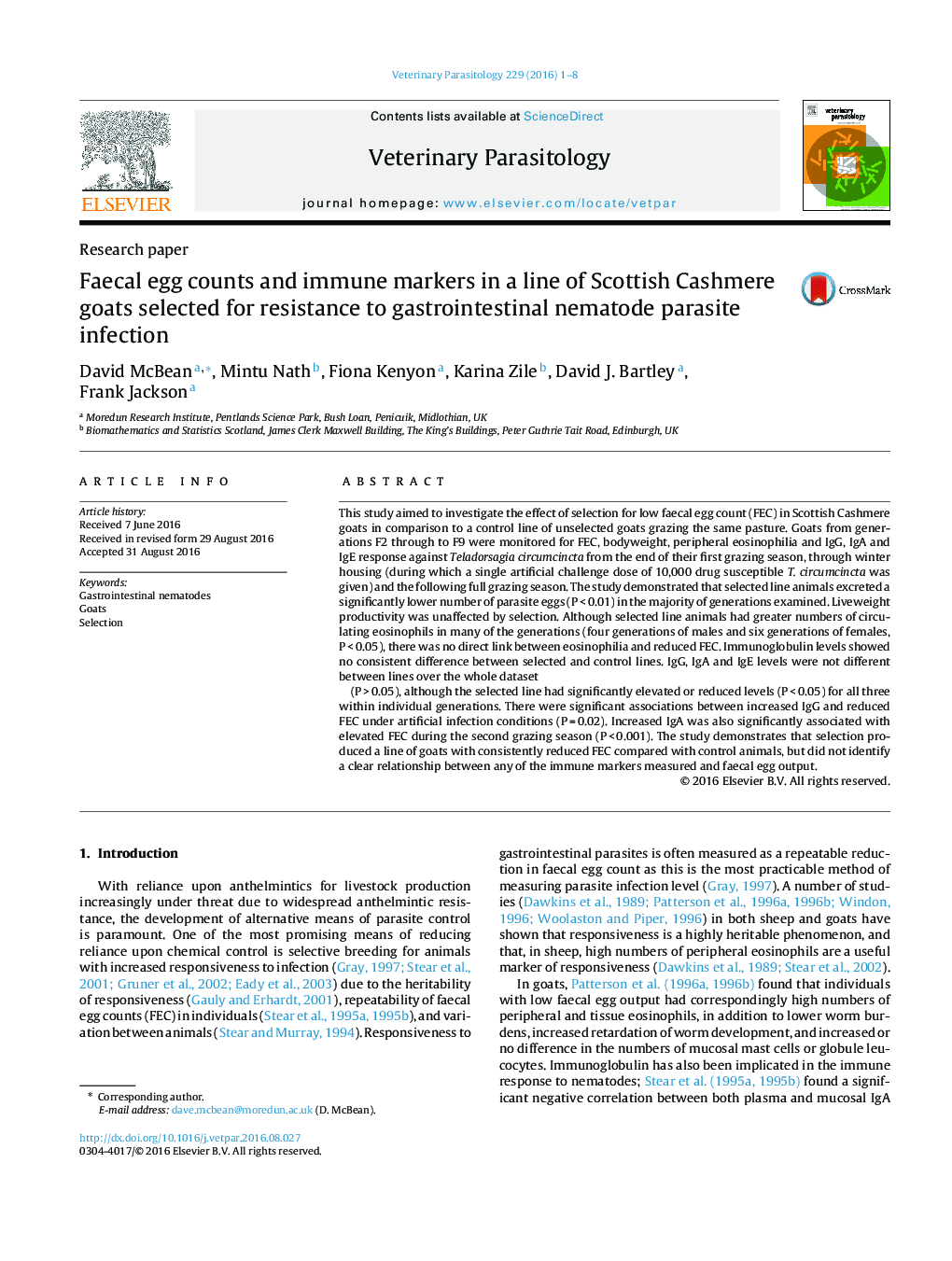| کد مقاله | کد نشریه | سال انتشار | مقاله انگلیسی | نسخه تمام متن |
|---|---|---|---|---|
| 5545953 | 1555647 | 2016 | 8 صفحه PDF | دانلود رایگان |
- Goats selected for low faecal egg count produced a line of offspring with reduced egg count compared with the unselected control line.
- Selected line goats were as productive as control animals grazing the same pasture.
- There was no clear relationship between reduced egg count and any immunological measurements taken.
This study aimed to investigate the effect of selection for low faecal egg count (FEC) in Scottish Cashmere goats in comparison to a control line of unselected goats grazing the same pasture. Goats from generations F2 through to F9 were monitored for FEC, bodyweight, peripheral eosinophilia and IgG, IgA and IgE response against Teladorsagia circumcincta from the end of their first grazing season, through winter housing (during which a single artificial challenge dose of 10,000 drug susceptible T. circumcincta was given) and the following full grazing season. The study demonstrated that selected line animals excreted a significantly lower number of parasite eggs (PÂ <Â 0.01) in the majority of generations examined. Liveweight productivity was unaffected by selection. Although selected line animals had greater numbers of circulating eosinophils in many of the generations (four generations of males and six generations of females, PÂ <Â 0.05), there was no direct link between eosinophilia and reduced FEC. Immunoglobulin levels showed no consistent difference between selected and control lines. IgG, IgA and IgE levels were not different between lines over the whole dataset(PÂ >Â 0.05), although the selected line had significantly elevated or reduced levels (PÂ <Â 0.05) for all three within individual generations. There were significant associations between increased IgG and reduced FEC under artificial infection conditions (PÂ =Â 0.02). Increased IgA was also significantly associated with elevated FEC during the second grazing season (PÂ <Â 0.001). The study demonstrates that selection produced a line of goats with consistently reduced FEC compared with control animals, but did not identify a clear relationship between any of the immune markers measured and faecal egg output.
Journal: Veterinary Parasitology - Volume 229, 15 October 2016, Pages 1-8
